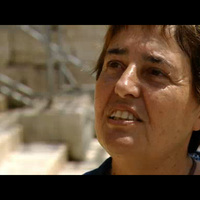
John Harrison
British psychologist with an interest in cognitive testing. Published author, voiceover actor and classical scholar. Read more at: http://www.linkedin.com/in/drjohnharrison.
less
Related Authors
Eric S . Kim (UBC)
University of British Columbia
Gregory Hanlon
Dalhousie University
Sinclair W Bell
Northern Illinois University
Andreas J Önnerfors
Linnaeus University
David Seamon
Kansas State University
Caroline J . Tully
University of Melbourne
Giulia Sissa
Ucla
John Sutton
Macquarie University
Francois de Callatay
Royal Library of Belgium
Olga Palagia
National & Kapodistrian University of Athens
InterestsView All (17)









Uploads
Papers by John Harrison
guidance on the standardization of the process for clinical outcomes in neuroscience. A minimal step process is defined starting as early as possible, covering key activities for evidence generation in support of content validity, patient-centricity, validity requirements and considerations for regulatory acceptance. Feedback from expert members is provided, regarding the risks of shortening the process and examples supporting the recommended process are summarized. This methodology is now available
to researchers in industry, academia or clinics aiming to implement consensus-based standard practices for clinical outcome selection, contributing to maximizing the efficiency of clinical research.
Methods: Cognitively unimpaired individuals from the Amsterdam Dementia Cohort and the SCIENCe project with available AD biomarkers, obtained from CSF, PET scans, and plasma at baseline, were followed over time (4.5 ± 3.1 years, range 0.6-18.9 years). Based on common inclusion criteria for clinical trials, we defined groups (amyloid, phosphorylated tau [p-tau], APOE ε4). Linear mixed models, adjusted for age, sex, and education, were used to estimate change over time in neuropsychological tests, a functional outcome, and 2 cognitive composite measures. Standardized regression coefficients of time in years (βtime) were reported as outcome of interest. We analyzed change over time with full follow-up, as well as with follow-up limited to 1.5 and 3 years.
Results: We included 387 individuals (aged 61.7 ± 8.6 years; 44% female) in the following (partly overlapping) biomarker groups: APOE ε4 carriers (n = 212), amyloid-positive individuals (n = 109), amyloid-positive APOE ε4 carriers (n = 66), CSF p-tau-positive individuals (n = 127), plasma p-tau-positive individuals (n = 71), and amyloid and CSF p-tau-positive individuals (n = 50), or in a control group (normal biomarkers; n = 65). An executive functioning task showed most decline in all biomarker groups (βtime range -0.30 to -0.71), followed by delayed word list recognition (βtime range -0.18 to -0.50). Functional decline (βtime range -0.17 to -0.63) was observed in all, except the CSF and plasma tau-positive groups. Both composites showed comparable amounts of change (βtime range -0.12 to -0.62) in all groups, except plasma p-tau-positive individuals. When limiting original follow-up duration, many effects disappeared or even flipped direction.
Discussion: In conclusion, functional, composite, and neuropsychological outcome measures across all cognitive domains detect changes over time in various biomarker-defined groups, with changes being most evident among individuals with more AD pathology. AD prevention trials should use sufficiently long follow-up duration and/or more sensitive outcome measures to optimally capture subtle cognitive changes over time.
guidance on the standardization of the process for clinical outcomes in neuroscience. A minimal step process is defined starting as early as possible, covering key activities for evidence generation in support of content validity, patient-centricity, validity requirements and considerations for regulatory acceptance. Feedback from expert members is provided, regarding the risks of shortening the process and examples supporting the recommended process are summarized. This methodology is now available
to researchers in industry, academia or clinics aiming to implement consensus-based standard practices for clinical outcome selection, contributing to maximizing the efficiency of clinical research.
Methods: Cognitively unimpaired individuals from the Amsterdam Dementia Cohort and the SCIENCe project with available AD biomarkers, obtained from CSF, PET scans, and plasma at baseline, were followed over time (4.5 ± 3.1 years, range 0.6-18.9 years). Based on common inclusion criteria for clinical trials, we defined groups (amyloid, phosphorylated tau [p-tau], APOE ε4). Linear mixed models, adjusted for age, sex, and education, were used to estimate change over time in neuropsychological tests, a functional outcome, and 2 cognitive composite measures. Standardized regression coefficients of time in years (βtime) were reported as outcome of interest. We analyzed change over time with full follow-up, as well as with follow-up limited to 1.5 and 3 years.
Results: We included 387 individuals (aged 61.7 ± 8.6 years; 44% female) in the following (partly overlapping) biomarker groups: APOE ε4 carriers (n = 212), amyloid-positive individuals (n = 109), amyloid-positive APOE ε4 carriers (n = 66), CSF p-tau-positive individuals (n = 127), plasma p-tau-positive individuals (n = 71), and amyloid and CSF p-tau-positive individuals (n = 50), or in a control group (normal biomarkers; n = 65). An executive functioning task showed most decline in all biomarker groups (βtime range -0.30 to -0.71), followed by delayed word list recognition (βtime range -0.18 to -0.50). Functional decline (βtime range -0.17 to -0.63) was observed in all, except the CSF and plasma tau-positive groups. Both composites showed comparable amounts of change (βtime range -0.12 to -0.62) in all groups, except plasma p-tau-positive individuals. When limiting original follow-up duration, many effects disappeared or even flipped direction.
Discussion: In conclusion, functional, composite, and neuropsychological outcome measures across all cognitive domains detect changes over time in various biomarker-defined groups, with changes being most evident among individuals with more AD pathology. AD prevention trials should use sufficiently long follow-up duration and/or more sensitive outcome measures to optimally capture subtle cognitive changes over time.
In this lecture I will begin by describing the variety and nature of cognitive deficits seen in early AD. I will show that whilst digital testing offers an efficient means of assessing cognition, its measures rarely exceed the levels of sensitivity and specificity for AD achieved by reliable ‘paper-and-pencil’ tests, which still have a key role to play. I will then critically review the measures commonly employed to assess cognition in primary healthcare, specialist centres and clinical trials. I will conclude with a review of options and recommendations.
Building gardens provided socially aspirational eighteenth-century individuals, such as the banker and Stourhead owner Henry Hoare, with the opportunity to demonstrate knowledge of Roman myth as an illustration of their ‘Taste’. In eighteenth-century Britain ‘Taste’ was heavily influenced by Roman literature, and especially the writings of Ovid. Translations of Ovid were widely read in eighteenth-century Britain and published not just for a literary elite, but instead to meet ‘a consistent demand across the century for Ovidian writing’. I will show how the use of Ovid at Stourhead in the eighteenth century illustrates how his tale of gods and nymphs could invoke reflection on the legacy of Rome as expressed in the context of an English landscape garden.
Theorists of Stourhead’s meaning have tended to presume that Henry Hoare (1705-1785) had in mind a ‘Grand Design’ and they have focused on the proposition that he was heavily influenced by the Aeneid. These same theorists have proposed psychoanalytic explanations of Henry Hoare’s design intentions. My doctoral research indicates that much of this theorising has been based on incorrect information and interpretation based on an intentionalist fallacy.
Rather than assuming that a grand plan was envisaged, I have adopted the view that individual elements of the garden must also be considered for meaning. These elements might be objects (e.g. statues), or arrays of objects in the context of a single structure (e.g. a temple or grotto). I propose also that the question of meaning should be extended beyond the intentions of the designer to include the reception of Stourhead by 18 & 19th century visitors. Furthermore I propose that visitor experience can be helpfully interpreted using a cognitive psychological rather than psychoanalytic approach.
In seeking to understand visitor accounts I have employed cognitive psychological theory and especially schema theories of memory organisation. I have assumed that visitor reception can be understood through the application of theories of memory and knowledge representation. I have further assumed that prior knowledge and expectation are a function of written and oral sources of information. Many of the early poetic and published accounts of visits were available in periodicals and it seems likely that visitor experiences were mediated by these published records. However, other sources of influence, including formal schooling and information passed orally from visitor acquaintances, estate workers and local guides, have also been considered. The structures and objects at Stourhead have been influenced and inspired by classical Roman structures, many of which were publically accessible to visitors in the 18thcentury, and especially those who embarked on Grand Tour expeditions. This source of influence and information has also therefore been considered.
In my presentation I will provide a brief description of my research into the gardens at Stourhead since October 2012, with reference to the Temple of Ceres, the Pantheon and the Temple of Apollo. My specific focus will be on the Grotto, which at Stourhead houses statues of a river god and a nymph. This structure has been interpreted by those adopting a Virgilian perspective as symbolic of Aeneas’ descent into hell. I will argue that recently discovered primary sources, including an Italian visitor account from 1787 and a 1780 poem, suggest that a more likely source of inspiration is Ovid’s tale of Daphne and Peneus from the Metamorphoses.
A series of break-out sessions will also be held, in which the latest basic or clinical research in the field of cognitive dysfunction in depression will be showcased by a member of the THINC Task Force. These will cover topics such as the neural underpinnings of cognitive dysfunction and the impact of antidepressant therapy on patient functioning, and will be followed by workshop activities. There will be the opportunity to ask questions throughout the meeting, in addition to interactive Q&A panel discussions with the presenters and members of the THINC Task Force. Attendance at this meeting is by personal invitation only.
The extant literature includes a number of visitor accounts to Stourhead though most have been relatively uninformative with respect to the content and evolution of the garden. This includes the garden buildings and their furnishings, but is particularly true of the statues that populated the various temples. A conspicuous exception to this was the record left by Horace Walpole after his visit in 1762, though his account is incomplete and contains factual errors.
In the past two years I have found several previously unconsidered accounts of the garden at Stourhead. These include the accounts of both domestic and overseas visitors, as well as several poems. Amongst the overseas visitor accounts is one by Count Carlo Gastone della Rezzonico, who visited in 1787. Gastone, a highly educated Italian visitor, offers a descriptive and critical account of Stourhead gardens from the period shortly after Henry Hoare’s death and prior to the substantial changes made by Richard Colt Hoare. In my paper I will show how Gastone, visiting the garden 45 years after Henry's return from Grand Tour, offers us an educated, native Italian interpretation of the garden features. These features were inspired by Henry Hoare’s Grand Tour. I will further show how the insight Gastone offers us illuminates our understanding of the garden element selection and their possible meaning.
• In an attempt to improve the detection of clinically meaningful cognitive decline in early Alzheimer’s disease (AD)1, we designed the Cognitive-Functional Composite (CFC).2-4
• We previously showed the CFC’s good reliability, feasibility of use and clinical relevance in mild cognitive impairment (MCI) and mild AD dementia.5,6
Aim - To investigate the CFC’s sensitivity to change over time, in comparison to traditional clinical endpoints.
Methods - We used baseline data of the Capturing Changes in Cognition (Catch-Cog) study: an international, multicenter, observational, prospective cohort-study including subjects with subjective cognitive decline (SCD), mild cognitive impairment (MCI), mild dementia due to Alzheimer’s disease (AD) and Lewy Bodies dementia (DLB) (MMSE ≥ 18). The CFC comprises seven existing cognitive tests focusing on memory and executive function, and an informant-based everyday functioning measure: the Amsterdam IADL Questionnaire (A-IADL-Q). The CFC’s factor structure was investigated using a principal component analyses (PCA) of all eight subtests. We calculated a weighted cognitive composite z-score (CC z-score) for the seven cognitive subtests, as well as a CFC z-score for all eight CFC subtests. We computed Pearson’s correlation coefficients between the CFC and traditional measures, including: 1) the CC z-score, MMSE and ADAS-Cog-13; 2) the A-IADL-Q, ADCS-ADL and CDR-SB; and 3) the CFC z-score and CDR-SB. To investigate range restrictions, we compared score distributions using histograms of the CFC and the traditional tests.
Results - A total of 142 subjects completed our baseline assessment (mean age 71.7±8.4, 43% female, mean MMSE 25.3±2.9). Diagnoses included SCD (n=13), MCI (n=54), mild AD (n=60) and DLB (n=11). The PCA yielded two factors, one loading on memory tests, and one mainly on executive functioning tests and the A-IADL-Q. As expected, we found moderate-to-high correlations between the CFC and traditional measures, supporting the CFC’s concurrent and construct validity. Histograms showed expected floor and ceiling effects for the traditional measures as compared with the CFC.
Conclusions - The CFC is a measure of early dementia relevant domains of cognition and function, yielding fewer range restrictions as compared to traditional tests. It is therefore better indicated for use to adequately and meaningfully evaluate cognition and function, in line with the recent FDA recommendations. We are currently assessing the CFC longitudinally in our Catch-Cog cohort.
Methods - Multicenter, prospective, test-retest study with 2-3 weeks between assessments. We included 48 memory-clinic subjects with MCI or mild dementia due to AD (MMSE ≥ 18, age ≥ 50) and 30 healthy volunteers (age ≥ 50). All subjects underwent the cognitive tests (+/- 25 min) whilst a study partner completed the A-IADL-Q (+/- 20 min). We computed intraclass correlation coefficients (ICCs) using a two-factor random model and type absolute agreement and Cohen’s d effect sizes. Feasibility was evaluated by interviewing a subsample of patients (n=15).
Results A total of 43 patients (40% female, aged 69.9 (SD=7.4), MMSE 25.2 (SD=3.2), years of education 14.3 (SD=5.1)) and 30 controls (50% female, age 65 (SD=7.1), years of education 16.9 (SD=4.0)) completed both study visits. Overall, patients were older (p=.006) and received less education (p=. 022) than controls. Cognitive subtest ICCs were all >0.70, indicating high test-retest reliability (Table 1). We found very high test-retest reliability for the A-IADL-Q (ICC = .96). For the cognitive subtests, we found a statistical significant change on the DSST in patients and controls, and on the COWAT in controls (Figure 1). However, effect sizes for change scores indicated limited practice effects, especially in patients (Table 1). Feasibility interviews indicated that the patients’ general impression of the CFC was mainly positive. In general, its total duration (20-25 minutes) was experienced as acceptable. Test materials were described as clear and very readable.
Conclusions -Our results demonstrate that the CFC meets important quality metrics for clinically meaningful outcome measures. The next step in our validation plan is to determine its sensitivity to change over time.
facilitate the definitive evaluation of the cognitive effects of novel compounds in drug development. Since then this system (the Cognitive Drug Research computersied assessment system) has been used in hundreds of clinical trials worldwide and data from the system has been widely disseminated including over 150 peered reviewed papers and chapters. A huge normative database has been established over the age range 20 to 90 years. The system has also been used widely in different types of dementia as well as in trials of AAMI, ARCD and MCI. The tests have also been extensively validated and correlated widely with functional everyday scales. This presentation will critically review the information which can be gained from screening with this instrument, and describe the extent to which such data can be used to support the identification and diagnoses of various cognitive disorders associated with aging.
Methods - Data were included from 14 trials (four Phase 2 and 10 Phase 3). Double- blind treatment periods were 8–12 weeks for Phase 2 and 24–104 weeks for Phase 3. In most studies, patients with hypercholesterolemia received maximally tolerated statin; other LLTs were also permitted in the majority of studies. Alirocumab was administered at a dose of 75 or 150 mg every 2 weeks (Q2W). All Phase 2 and five Phase 3 studies compared alirocumab with placebo; five Phase 3 studies compared alirocumab with ezetimibe. Neurocognitive TEAEs were self-reported by patients. In the current analysis, they were defined using a broad company custom Medical Dictionary of Regulatory Activities (MedDRA) query proposed by the sponsor. An analysis was performed to examine the rate of neurocognitive TEAEs in different age groups (<65 years, 65–74 years, and ≥75 years).
Results - Data were available for 5234 patients (n=3340 alirocumab, n=1276 placebo, n=618 ezetimibe). Exposure to alirocumab was 4029 patient-years. The mean age across all treatment groups was 58.5–62.1 years. In the placebo-controlled pool, 22 patients (0.9%) receiving alirocumab and nine patients (0.7%) receiving placebo had a neurocognitive TEAE (HR 1.24; 95% CI 0.57–2.68); corresponding values in the ezetimibe-controlled pool were 10 (1.2%) and eight (1.3%) for alirocumab and ezetimibe, respectively (HR 0.81; 95% CI 0.32–2.08). Rates of neurocognitive TEAEs were similar in patients receiving alirocumab with two consecutive values of LDL-C <25 mg/dL (n=5/839; 0.6%;0.5/100 patient-years) versus patients receiving alirocumab with levels≥25 mg/dL (n=26/2501; 1.0%; 0.8/100 patient-years) and patients in control groups (n=17/1894; 0.9%; 0.7/100 patient-years) (Figure 2). No patients in the control groups achieved LDL-C <25 mg/dL. One (0.1%) patient receiving alirocumab, two (0.2%) receiving placebo,and three (0.4%) receiving ezetimibe had neurocognitive TEAEs leading to treatment discontinuation. Most neurocognitive TEAEs were mild or moderate. One patient receiving placebo had a severe neurocognitive TEAE, compared with none receiving alirocumab or ezetimibe. Across groups, neurocognitive TEAE rates were highest in patients aged ≥75 years (3.9–6.9%) and lowest for patients aged <65 years (0.3–0.8%), with no significant difference between treatment groups in any age bracket.
Conclusions - In four Phase 2 and 10 Phase 3 trials involving 5200 patients for up to 104 weeks, there was no apparent increase in neurocognitive TEAEs with alirocumab treatment overall or in different age groups. Based on the analyzed Phase 2 and 3 trials, LDL-C levels <25 mg/dL were not associated with a higher frequency of neurocognitive TEAEs. Further evaluation in longer-term studies is planned, with more detailed neurocognitive assessment and evaluation of potential contributing factors such as age, comorbidities and concomitant medication. A study on the neurocognitive effects of longer-term alirocumab treatment has begun (NCT XXX), using formal neurocognitive testing.
• The influence of classical Roman literature on the eighteenth-century English country garden
• Greek influences in eighteenth-century English country gardens
• The influence of the Grand Tour on eighteenth-century English country gardens
• Visitor accounts of Stourhead and other eighteenth-century English country gardens
• Eighteenth-century English country garden designers
• The picturesque and the design and reception of the eighteenth-century English country garden
• Depiction of the eighteenth-century English country garden in the fine arts
• The country garden and publishing: newspapers, periodicals, guidebooks and journals
• Topographical poetry
• Theories of meaning in the eighteenth-century English country garden
• Relationships between houses, gardens and wider estates
• Lord Burlington and his circle